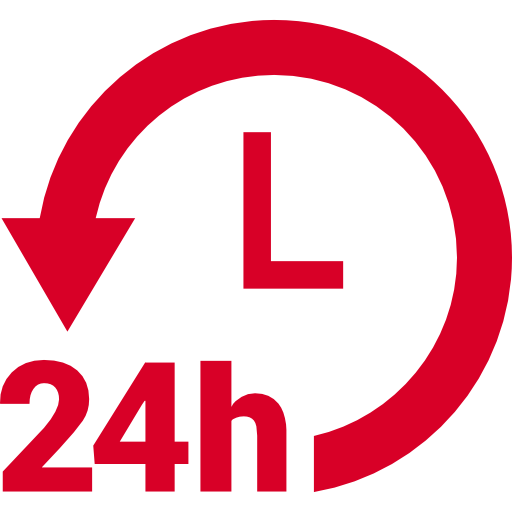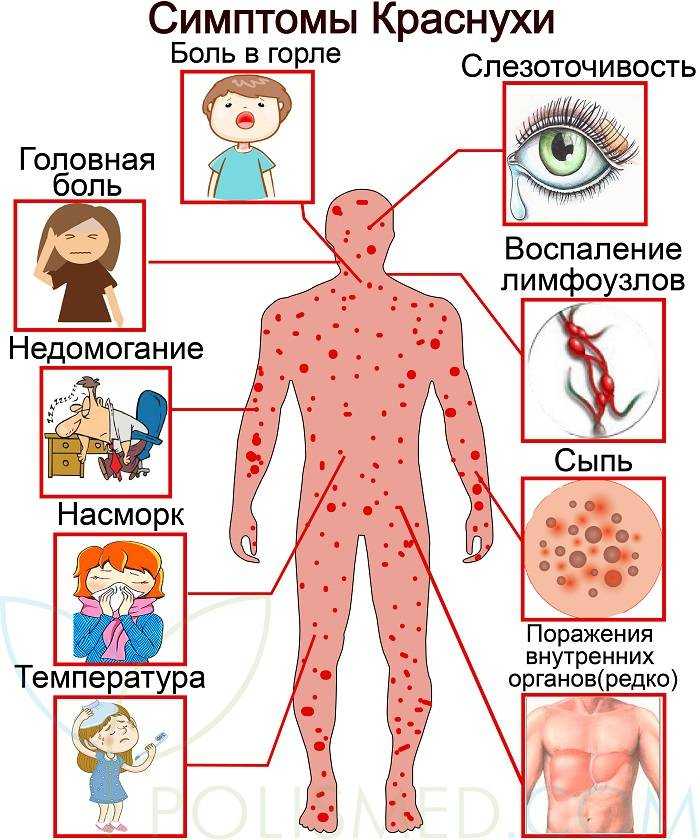First 24 hours
Baby's first 24 hours | Pregnancy Birth and Baby
Baby's first 24 hours | Pregnancy Birth and Baby beginning of content5-minute read
Listen
The first day of your new baby’s life is thrilling and exhausting for both of you. This page explains what your newborn baby can sense, and how the umbilical cord and placenta can be managed. It has general information for you if you have had a healthy, full-term pregnancy – 37 to 42 weeks’ gestation.
What will my newborn baby look like?
When your baby is born, their skin might be blue and mottled. They are likely to be covered in amniotic fluid, blood and vernix, which is a cheesy white substance. This is normal.
Their skin will start to become pink as they start to breathe — which is about a minute after birth. Your baby’s hands and feet may still appear blueish for several hours.
The amniotic fluid and the vernix are there because they were there in the womb. They are important for your baby to be able to smell and taste after birth. These familiar things help your baby to feel secure outside the womb.
Birth of the placenta and cutting the umbilical cord
After you have given birth to your baby, you will have more contractions that will help you deliver the placenta. Once this happens, the umbilical cord, which is connected to the placenta, will be clamped in two places and cut. Your support person might be invited to cut the cord.
Skin-to-skin contact
After a normal vaginal birth, your newborn baby will be put on your chest for skin-to-skin contact. Your baby needs sleep and food, and they need to feel secure and warm, so they need to feel your skin.
Doing this simple thing:
- reduces newborn crying
- helps start and sustain breastfeeding
- helps maintain your baby’s body temperature
After this first contact, they will be weighed, measured and observed to make sure they are healthy.
If you have a caesarean section, ask your midwife to make sure your baby has skin-to-skin contact with you as early as possible. It may be possible for you or your partner to hold your baby-skin-to skin in theatre and in recovery.
Feeding
Babies start to show signs of wanting to feed soon after birth and usually attach and suck at the breast about 50 minutes after birth. They may then breastfeed for an hour or more. Put your baby against your chest, and they will probably find your breast and start feeding. If that doesn’t happen, you can ask your midwife or a lactation consultant for help.
The first milk you make is called 'colostrum'. It’s thick and often yellowish, rather than pure white. It’s the ideal milk for your baby. Normally a small amount is produced — your baby’s tummy is just the size of a marble.
If they haven’t fed an hour or so after birth, try again a couple of hours later. You can also express some colostrum to feed to your baby on a spoon.
Weighing and measuring
After skin-to-skin contact and the first breastfeed, your midwife might offer to weigh your baby, and measure your baby’s length and head circumference. Your baby doesn’t need to be washed for at least 24 hours.
Vitamin K
At the time of weighing, your midwife will also offer to give your baby a vitamin K injection to prevent bleeding from vitamin K deficiency.
Cord blood collection if you are Rh negative
If your blood group is Rh negative, some blood will be taken from the umbilical cord to determine whether your baby’s blood group is compatible.
Sleeping
Your baby will stay with you so you can bond and respond easily to their needs. They’ll probably sleep soon after their first feed, and that might last 6 hours or so. They will probably sleep for more than half of their first day in the world.
Apgar scores
One of the main observations made after birth is called an Apgar score. It assesses your baby’s adjustment to life outside the womb. The Apgar score is measured at 1 minute and 5 minutes after birth while the baby is on your chest. Sometimes it is measured again at 10 minutes after birth.
The Apgar score is measured at 1 minute and 5 minutes after birth while the baby is on your chest. Sometimes it is measured again at 10 minutes after birth.
It records your baby’s heart rate, breathing, colour, muscle tone and reflexes. The maximum score is 10. A score of 7 or above usually means your baby is doing well. It is not an ability or intelligence test, and it doesn’t predict your baby’s health later in life.
What will my newborn baby see, hear, smell, taste and feel?
Your baby has been listening to your voice for the last half of your pregnancy and will recognise it when you speak to them after birth. Your partner or support person’s voice may also be familiar if they have also been talking near your baby. Your baby will feel secure when they hear your voices and may respond by turning their head towards you. Your baby will also be able to hear your heart beating as they did in the womb.
Your baby’s vision is blurred at birth but they will be able to focus on your face from about 30 centimetres away. This is called the ‘cuddle distance’. It is roughly the distance from your breast to your face. Your baby will make the connection between what they hear and what they see.
This is called the ‘cuddle distance’. It is roughly the distance from your breast to your face. Your baby will make the connection between what they hear and what they see.
Your baby will smell and taste the amniotic fluid and your colostrum, which has a similar flavour.
Urine and meconium
Within the first 24 hours your baby will probably pass urine and meconium (newborn faeces) at least once. Meconium is black and sticky. Your baby’s poo will change colour and consistency over the next few days.
More information
You can call Pregnancy, Birth and Baby, 7 days a week on 1800 882 436 to speak with a maternal child health nurse to find out more.
Sources:
Cochrane (Early skin-to-skin contact for mothers and their healthy newborn infants), National Institute for Health and Care Excellence (NICE) (NICE Guideline CG37: Postnatal care up to 8 weeks after birth), World Health Organization (WHO) (Recommendations on newborn health), Raising Children Network (After baby is born: what to expect in the first few hours), Australian Breastfeeding Association (Breastfeeding timeline)Learn more here about the development and quality assurance of healthdirect content.
Last reviewed: September 2022
Back To Top
Related pages
- Your baby in the first few days
- Mum's first 24 hours after birth
- Mum's first few days after giving birth
- Birth injury (to the baby)
- What is kangaroo care?
Need more information?
Newborn clothes & dressing a newborn | Raising Children Network
How many clothes does a newborn need? And what newborn clothes are best? Get answers to these questions and more in our guide to dressing a newborn.
Read more on raisingchildren.net.au website
Newborns behaviour | Raising Children Network
Newborn behaviour baffling you? Here's all you need on newborns behaviour with articles, videos and resources on crying, colic and more.
Read more on raisingchildren.net.au website
Newborn bloodspot screening - MyDr.com.au
Newborn screening tests can detect rare but serious genetic or metabolic disorders in newborn babies.
Read more on myDr website
Dressing a newborn
When dressing your newborn, here are a few things to consider, like which clothes to use, how to dress them and making sure the change table is safe.
Read more on Pregnancy, Birth & Baby website
Wind, burping & newborn babies in pictures | Raising Children Network
Newborns might have wind from swallowing air when crying or feeding. Burping can help newborns get rid of wind. See how to burp your newborn – in pictures
See how to burp your newborn – in pictures
Read more on raisingchildren.net.au website
Newborn essentials
Here is a newborn's essentials checklist including vaccinations and immunisations, health checks, nappy changing and breastfeeding and bottle feeding.
Read more on Pregnancy, Birth & Baby website
Newborns development | Raising Children Network
Want to track newborns development? Here's all you need on newborn development with articles, videos and resources on growth, relationships and more.
Read more on raisingchildren.net.au website
Is my newborn safe? - MyDr.com.au
Dr Norman Swan explains the risks of COVID-19 to your newborn.
Read more on myDr website
Newborns sleep | Raising Children Network
Need help understanding newborn sleep? Here’s all you need on newborn sleep with articles, videos and resources on safe sleep, sleep habits, tiredness and more.
Read more on raisingchildren.net.au website
Newborns safety | Raising Children Network
Newborn safety stressing you? Here’s all you need on newborns safety with articles, videos and resources on first aid, CPR, equipment, car seats and more.
Read more on raisingchildren.net.au website
Disclaimer
Pregnancy, Birth and Baby is not responsible for the content and advertising on the external website you are now entering.
Need further advice or guidance from our maternal child health nurses?
1800 882 436
Video call
- Contact us
- About us
- A-Z topics
- Symptom Checker
- Service Finder
- Subscribe to newsletters
- Sign in
- Linking to us
- Information partners
- Terms of use
- Privacy
Pregnancy, Birth and Baby is funded by the Australian Government and operated by Healthdirect Australia.
Pregnancy, Birth and Baby’s information and advice are developed and managed within a rigorous clinical governance framework.
This site is protected by reCAPTCHA and the Google Privacy Policy and Terms of Service apply.
Healthdirect Australia acknowledges the Traditional Owners of Country throughout Australia and their continuing connection to land, sea and community. We pay our respects to the Traditional Owners and to Elders both past and present.
This information is for your general information and use only and is not intended to be used as medical advice and should not be used to diagnose, treat, cure or prevent any medical condition, nor should it be used for therapeutic purposes.
The information is not a substitute for independent professional advice and should not be used as an alternative to professional health care. If you have a particular medical problem, please consult a healthcare professional.
Except as permitted under the Copyright Act 1968, this publication or any part of it may not be reproduced, altered, adapted, stored and/or distributed in any form or by any means without the prior written permission of Healthdirect Australia.
Support this browser is being discontinued for Pregnancy, Birth and Baby
Support for this browser is being discontinued for this site
- Internet Explorer 11 and lower
We currently support Microsoft Edge, Chrome, Firefox and Safari. For more information, please visit the links below:
- Chrome by Google
- Firefox by Mozilla
- Microsoft Edge
- Safari by Apple
You are welcome to continue browsing this site with this browser. Some features, tools or interaction may not work correctly.
What to Expect in the First 24-Hours of Baby's Life
You have probably planned and prepared for what labor and pushing will be like, or maybe even a c-section for your birth. But not many people think about what they may expect once their little one comes into the world. Usually, it’s a whirlwind of different tests, procedures, tons of swaddling, practicing breastfeeding, and more. The baby’s first 24 hours of life will fly by. However, every parent should be prepared as to what to expect. If you had a vaginal birth, here’s what you can expect on your baby’s first day of life if you have a healthy baby in a hospital.
The baby’s first 24 hours of life will fly by. However, every parent should be prepared as to what to expect. If you had a vaginal birth, here’s what you can expect on your baby’s first day of life if you have a healthy baby in a hospital.
Note: Every hospital is different and has different delivery procedures and protocols. Below is what is likely to happen in a baby’s first 24 hours of life.
The First 5 Minutes After Birth
As soon as your child is born, the doctor will suction their mouth and nose with a bulb syringe. This will clear away any mucus and amniotic fluid in their breathing passageway. The medical staff then usually places the baby immediately on your chest (if baby is doing well). The nurses begin evaluating your baby as your doctor clamps the umbilical cord (unless you decide to do delayed cord clamping) and cuts the cord (or you have your partner cut the cord).
The evaluation the nurses are doing on the baby while they are on your chest is for the Apgar test. What is that? The Apgar test is a quick test performed on babies in the first and fifth minutes of life. The first-minute score determines how well your baby has tolerated the birthing process, and the fifth-minute score determines how well your baby is doing in the outside world.
What is that? The Apgar test is a quick test performed on babies in the first and fifth minutes of life. The first-minute score determines how well your baby has tolerated the birthing process, and the fifth-minute score determines how well your baby is doing in the outside world.
During the evaluation, they are checking baby’s:
- Breathing effort
- Heart rate
- Muscle tone
- Grimace response or reflex irritability
- Skin color
The Apgar rating is based on a scale of 1 to 10. Each category listed above is scored 0, 1, or 2, depending on the observed condition. The higher the score, the better your baby is doing after birth. A score of 7, 8, or 9 is normal. They are scores that tell you that your baby is in good health. Out of all the births I have been to, I have only seen one baby score a 10. However, that was at a home birth. A hospital will never give your baby a 10 since almost all newborns lose 1 point for blue hands and feet, which is very common after childbirth. Usually, perfectly healthy babies are given a 9 as their score.
Usually, perfectly healthy babies are given a 9 as their score.
While delivering your placenta, your newborn will be looked at and adored by you and your loved ones in the room. And a lot of pictures will be taken. The nurses are usually helping you wipe your baby off if you choose to do that, as they are determining the Apgar scores.
Hours 1 to 3
During the first hour of your baby’s life, many hospitals are practicing the “golden hour,” which allows babies to stay on the mother’s chest for the first hour to breastfeed and do skin-to-skin. Every 15-minutes, nurses check the baby’s vitals on mama’s chest.
Some hospitals will weigh and measure your baby during the first hour of life. They will also administer antibiotic eye ointment (erythromycin) to prevent eye infections resulting from passing through the birth canal. Your baby will also receive a vitamin K shot in the thigh to avoid clotting problems. Another vaccine they will receive is the Hepatitis B vaccine. This will be the first of three doses your baby will receive throughout their lifetime. The nurses will also put ink on their feet to record their little footprints.
This will be the first of three doses your baby will receive throughout their lifetime. The nurses will also put ink on their feet to record their little footprints.
Note: I recommend that partners stand where the baby is to ensure they are doing okay. Also, so your partner can take pictures of your new baby. Moreover, bring a baby book with you so you can record your baby’s footprints, too.
Once your baby’s initial tests have been completed, the nurse will swaddle your baby up in a blanket like a little burrito. They will then give the baby back to you (mom) or your partner to hold. You will have a short time together in your delivery room before transferring to your postpartum room. That usually happens at the end of the second or third hour after birth.
Recommendation: When your baby is rooting for the breast and making sucking faces, put your baby on your boob! During those first days, the more you have baby on your breast and doing skin-to-skin, the better! This helps your milk come in faster.
Hours 4 to 22
At this point, you will be in your postpartum room and learning how to take care of your newborn. Your postpartum nurse will help you with a lot of the newborn care if you need guidance and help. They will help you change the first diaper, especially when your baby passes their first poop, called meconium. That one is pretty sticky!
Your nurse will also teach you how to swaddle your baby, how to care for the umbilical-cord stump, how to breastfeed or bottle-feed (whichever you choose) your baby, and she will help you give them their first bath.
Your baby will want/need to be fed every two to three hours. Breastfeeding can be difficult, so request to see the hospital’s lactation consultant. She can ensure baby is getting a good latch and that things are getting off to a great start. Even if you think everything is going perfectly well with breastfeeding. I still recommend that you visit with the lactation consultant. Things can quickly change, and you will be so grateful to have help if they do.
Hours 23 and 24
By the end of the first day, your baby will have been evaluated by your baby’s pediatrician or on-staff pediatrician. The doctor will look for malformations and infection risk factors and ensure that your child is feeding and breathing well. Your doctor will also check to see if your baby has jaundice.
Jaundice causes your baby’s skin and whites of the eyes to appear yellowish because of high bilirubin levels in their blood. This means that the bilirubin in your baby’s system isn’t being broken down in the liver. Babies with the condition are usually sent to receive phototherapy, a special kind of light that helps break down bilirubin. You’ll also be encouraged to nurse your little one frequently to help eliminate the bilirubin through their stool.
Additionally, they will prick your baby’s heel to screen for up to 50 different metabolic diseases, including sickle cell anemia and phenylketonuria (PKU). And If you have a baby boy and are planning to circumcise your son at the hospital, usually the hospital will circumcise them 24-hours after he is born. (Do your research before making this decision as well.)
(Do your research before making this decision as well.)
So enjoy that baby of yours. Give them lots of kisses and snuggles. Cherish that first day together as a family. Consider not having visitors and just being the three of you. It goes by too quickly. Whatever you choose along the way, remember that you did it! You had your baby and finally, have your little one in your arms. 🙂
Emergency contraception | 72HRS.RU
Among the many contraceptives, there are those that come to the rescue even in a hopeless situation. These are emergency contraceptives. They are effective in preventing unwanted pregnancy up to 72 hours after an episode of unprotected sex. The active ingredient in these pills is levonorgestrel, a synthetic hormone that prevents or delays ovulation, preventing fertilization from occurring.
Emergency
contraception
Among the many contraceptives, there are those that come to the rescue even in a hopeless situation. These are emergency contraceptives. They are effective in preventing unwanted pregnancy up to 72 hours after an episode of unprotected sex. The active ingredient in these pills is levonorgestrel, a synthetic hormone that prevents or delays ovulation, preventing fertilization from occurring.
They are effective in preventing unwanted pregnancy up to 72 hours after an episode of unprotected sex. The active ingredient in these pills is levonorgestrel, a synthetic hormone that prevents or delays ovulation, preventing fertilization from occurring.
WHEN AND HOW TO TAKE?
01
When are these
tablets used?
- If you did not use protection
- If you used protection, but the contraceptive was used incorrectly or something went wrong (see
in the table if it suits your case)
| Method of protection | Consider using emergency contraception after intercourse if: |
|---|---|
| Condoms |
|
| Oral contraceptives, contraceptive patch, vaginal ring |
|
| Coitus interruptus |
|
| Methods of contraception based on self-calculation of the fertile period (“dangerous days”) |
|
| Spermicide |
|
| Diaphragm or cap |
|
| Intrauterine device or system (IUD, VGMS) |
|
| Implants |
|
| Progestin-only injection |
|
02
How should they be taken?
Usually one or two tablets per package. If one - you must drink it within 48 hours (but no later than 72 hours!) After sexual intercourse. If two tablets, then the first you take within 48 hours, and then after 12 hours - the second.
The drug can be used on any day of the menstrual cycle. Tablets are taken orally, regardless of the meal.
48 hours
72 hours
unprotected
intercourse
03
Need to take a pill as soon as possible?
Yes, that's right! The more time passed between sexual intercourse and taking the drug, the lower its effectiveness (95% during the first 24 hours, 85% - from 24 to 48 hours, and 58% - from 48 to 72 hours) 1 .
95%
0-24 hours
85%
24 to 48 hours
58%
48 to 72 hours
04 9010 It can wait?
Calculate, if more than 24 hours will not pass until morning, then, apparently, it is not worth running to the pharmacy on duty at night. And for the future, it’s better to buy a pack of pills to use them just in such exceptional cases.
05
Do I need to do any tests before taking the pill?
These drugs are considered safe for women's health. Before use, it is not required to undergo a gynecological examination, measure blood pressure or take tests.
HOW DO THEY WORK?
06
How do emergency contraceptive pills work?
Typically, most of these drugs contain levonorgestrel, a synthetic derivative of the hormone testosterone. Its main action is to inhibit the process of ovulation 2 .
07
But are these pills effective at all?
Yes, especially if you used emergency contraception immediately. Studies show that taking a pill reduces the risk of pregnancy by at least half, and if you drink the drug during the first 24 hours, then generally 95% 1 .
Studies show that taking a pill reduces the risk of pregnancy by at least half, and if you drink the drug during the first 24 hours, then generally 95% 1 .
IS IT DANGEROUS?
08
And if I suddenly become pregnant, what will happen? Medical abortion?
No. Emergency contraceptive pills do not cause abortion. Moreover, they do not harm either the pregnant woman or her fetus. This has been confirmed by studies of women who became pregnant despite taking levonorgestrel, or who used it accidentally after pregnancy.
During the existence of emergency contraceptive pills, no serious complications have been recorded. The side effects that occur are not dangerous to health. These may include: irregular spotting (bleeding), nausea, headache, abdominal pain, vomiting, diarrhea, breast tenderness, dizziness, and fatigue. As a rule, all this goes away on its own without additional treatment.
10
I have heard that emergency contraceptive pills increase the risk of having an ectopic pregnancy in the future.
 Is it so?
Is it so? Let's turn to research again. Only 1% of women using these tablets experienced an ectopic pregnancy 4 . These figures are close to the percentage risk of ectopic pregnancy among pregnancies in which emergency contraception was not used.
Accordingly, we can conclude that these drugs have no effect on the risk of ectopic pregnancy.
11
Can bleeding occur? Does the menstrual cycle get interrupted as a result?
Irregular spotting (bleeding) due to the use of tablets is not dangerous and stops without any treatment.
And with the cycle there may be slight shifts - an earlier onset or a delay in the next menstruation by 5-7 days.
12
And if menstruation has not started?
If you do not have a period after 3 weeks, you should see a doctor and check if you are pregnant.
13
I know that there are many contraindications for taking hormonal contraceptives, such as liver disease, obesity and diabetes.
 Does the same apply to emergency contraception?
Does the same apply to emergency contraception? No, these pills are relatively safe for any woman's health.
Contraindications to their use are: hypersensitivity to any component of the drug, use in adolescents under 16 years of age, severe liver failure, pregnancy, the presence of rare hereditary diseases - lactose intolerance, lactase deficiency or glucose-galactose malabsorption.
WHAT'S THEN?
14
The last thing I want in the world is to get pregnant right now. Can I take such a pill BEFORE sexual intercourse, so as not to worry?
Theoretically you can, but... Emergency contraception is called emergency contraception because you only use it as a last resort. If you can use any other methods of contraception in advance, then it is better to use them.
15
And if I have another unprotected sex, can I take the pill again?
In general, these tablets are not intended for regular use. But if it happened - yes, you can accept it. Studies have shown that taking multiple doses of levonorgestrel per cycle does not cause serious negative side effects 5 .
Studies have shown that taking multiple doses of levonorgestrel per cycle does not cause serious negative side effects 5 .
- In what cases are these tablets used?
- How should they be taken?
- Need to take a pill as soon as possible?
- And if it's night, where can I get the medicine? It can wait?
- Do I need to do any tests before taking the pill?
- How do emergency contraceptive pills work?
- But are these pills actually effective?
- And if suddenly I'm already pregnant - what will happen? Medical abortion?
- Are there any serious side effects from taking it?
- I have heard that emergency contraceptive pills increase the risk of future ectopic pregnancies. Is it so?
- Can there be bleeding? Does the menstrual cycle get interrupted as a result?
- What if you haven't started your period?
- I know that there are many contraindications for taking hormonal contraceptives - for example, liver disease, obesity and diabetes.
 Does the same apply to emergency contraception?
Does the same apply to emergency contraception? - The last thing I want in the world right now is to get pregnant. Can I take such a pill BEFORE sexual intercourse, so as not to worry?
- And if I have another unprotected sex, can I take the pill again?
1. Raymond E, Taylor D, Trussell J, Steiner MJ. Minimum effectiveness of the levonorgestrel regimen of emergency contraception. Contraception 2004;69(1):79-81.
2. Stratton P, Levens ED, Hartog B, et al. Endometrial effects of a single early luteal dose of the selective progesterone receptor modulator CDB-2914. Fertil Steril 2010;93(6):2035-41. Croxatto HB, Devoto L, Durand M, et al. Mechanism of action of hormonal preparations used for emergency contraception: a review of the literature. Contraception 2001;63(3):111-21. Marions L, Hultenby K, Lindell I, Sun X, Stabi B, Gemzell Danielsson K. Emergency contraception with mifepristone and levonorgestrel: mechanism of action. Obstet Gynecol 2002;100(1):65-71.
3. De Santis M, Cavaliere AF, Straface G, Carducci B, Caruso A. Failure of the emergency contraceptive levonorgestrel and the risk of adverse effects in pregnancy and on fetal development: an observational cohort study. Fertil Steril 2005;84(2):296-9. Zhang L, Chen J, Wang Y, Ren F, Yu W, Cheng L. Pregnancy outcome after levonorgestrel-only emergency contraception failure: a prospective cohort study. Hum Reprod 2009;24(7):1605-11.
4. Cleland K, Raymond E, Trussell J, Cheng L, Zhu H. Ectopic pregnancy and emergency contraceptive pills: a systematic review. Obstet Gynecol 2010;115(6):1263-6.
5. Raymond EG, Halpern V, Lopez LM. Pericoital oral contraception with levonorgestrel: a systematic review. Obstet Gynecol 2011;117(3):673-81.
Windows 10: The first 24 hours
It has been an absolutely incredible 24 hours for Windows and its fans. We are extremely honored and excited about the popularity of Windows 10. Demand for the new OS has been unprecedented, with customers and reviewers reporting exceptionally well. In the coming days and weeks, we will do our best to help everyone upgrade to Windows 10.
In the coming days and weeks, we will do our best to help everyone upgrade to Windows 10.
From Sydney to Nairobi and from London to New York, we celebrated this joyful occasion with fans all over the world. We're so excited about their feedback on Windows 10 that we've decided to show you some of our favorite photos.
We are also very pleased with the support of the #UpgradeYourWorld initiative. Thank you for sharing your passion for a better world with us through this initiative. Don't stop there! This initiative will last for a whole year, during which you and I can accomplish many great things around the world.
There's also news about upgrading to Windows 10: we want people to be able to easily get the technical support they need. Read more about this below.
Our team is very pleased with the Windows 10 reviews in the press and social media reactions. When we first started development, such titles could only be dreamed of.
- CNN: "Windows 10 is just a great product"
- AOL: Help Microsoft Change the World
- Wired: "Upgrade to Windows 10 first"
Windows 10 Upgrade News
As we said, our main goal is to ensure that all users upgrade as smoothly as possible. Therefore, Windows 10 is being rolled out in phases, with Windows Insiders receiving the update first. While there are over 14 million devices running Windows 10 today, we still have a lot of PCs to upgrade before everyone who has reserved an upgrade can get it. But don't worry, the process goes on around the clock, and our main goal is to ensure it is of the highest quality. We thank you for your enthusiasm for the new OS and look forward to your understanding. Be patient a little longer, and in the next few days or weeks, each of you will receive your copy of Windows 10 in a phased rollout.
Therefore, Windows 10 is being rolled out in phases, with Windows Insiders receiving the update first. While there are over 14 million devices running Windows 10 today, we still have a lot of PCs to upgrade before everyone who has reserved an upgrade can get it. But don't worry, the process goes on around the clock, and our main goal is to ensure it is of the highest quality. We thank you for your enthusiasm for the new OS and look forward to your understanding. Be patient a little longer, and in the next few days or weeks, each of you will receive your copy of Windows 10 in a phased rollout.
If you have reserved your upgrade to Windows 10, we will notify you as soon as your PC is ready to upgrade and the OS is downloaded to your device. How to know about it? The following notification will appear in the taskbar:
If you haven't reserved your free upgrade to Windows 10 yet, you can do so by installing the Get Windows 10 app on your Windows 7 or Windows 8.1 PC.![]() When everything is ready, a notification will come. If you don't have the Get Windows 10 app on your computer, it might not have all the updates installed. Open Windows Update and install all available updates. If you still can't find this app on your device, check out this article.
When everything is ready, a notification will come. If you don't have the Get Windows 10 app on your computer, it might not have all the updates installed. Open Windows Update and install all available updates. If you still can't find this app on your device, check out this article.
Support options
We really want to make the upgrade to Windows 10 as smooth as possible. If you need help, we offer a wide range of support options (see below). Use them if you have any problems after starting or completing the update. If you have questions about how to upgrade, please visit this page.
- Answer Desk staff will offer you personalized technical support during the upgrade process. You can schedule an appointment with a dedicated specialist or contact them directly via chat or phone, or come to the retail store in person. The Answer Desk offers real people to help you get started with Windows 10 with ease. Unfortunately, the Answer Desk won't be able to tell you when you'll receive your update.
 Just remember that there will definitely be an icon in the taskbar when it's ready to be installed. Learn more about Answer Desk here.
Just remember that there will definitely be an icon in the taskbar when it's ready to be installed. Learn more about Answer Desk here. - We also work closely with retail partners including Best Buy, Bic Camera, Croma, Currys/PC World, Elkjøp, Jarrir, Incredible Connection, Media Markt, Staples, Wal-Mart, Yamada, Yodobashi and many other leading stores around the world. the world. With their help, we implement programs that make it easy for you to upgrade. Tech Bench staff will help you upgrade your OS to Windows 10, as well as transfer data from your old computer to a new one.
- At Microsoft Stores, you can use the Answer Desk for a hassle-free upgrade. Learn more about Answer Desk in our stores here.
Our heartfelt thanks to everyone who is celebrating with us this week - especially our fans, Windows Insiders, and partners. Thank you to those who have already upgraded to Windows 10 and to those who will in the coming days and weeks. After all, it is with your help that we plan to install Windows 10 on a billion devices in the next few years.














